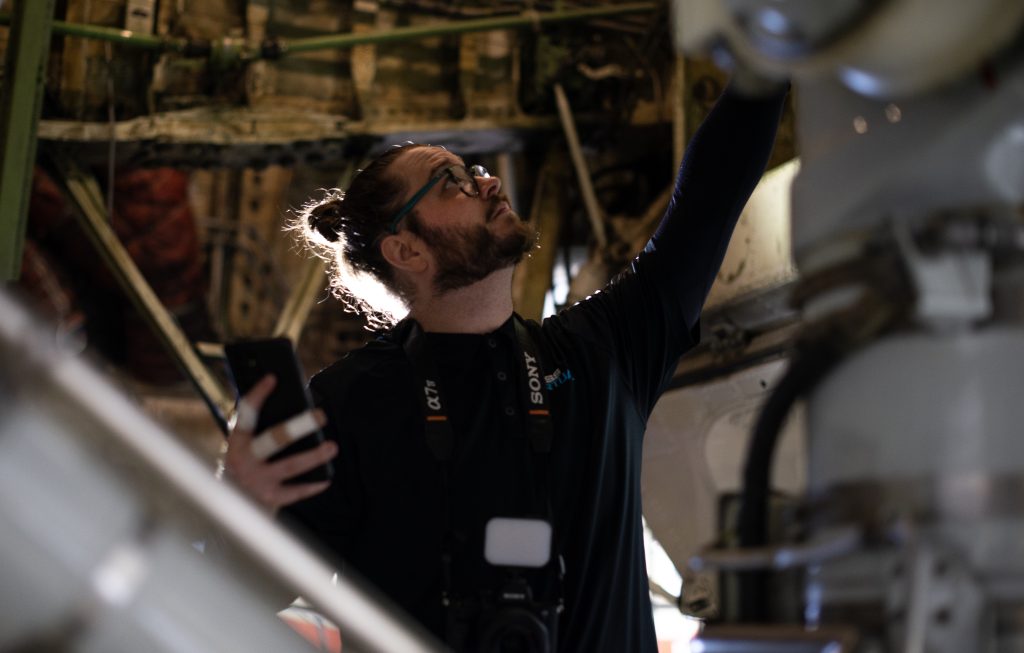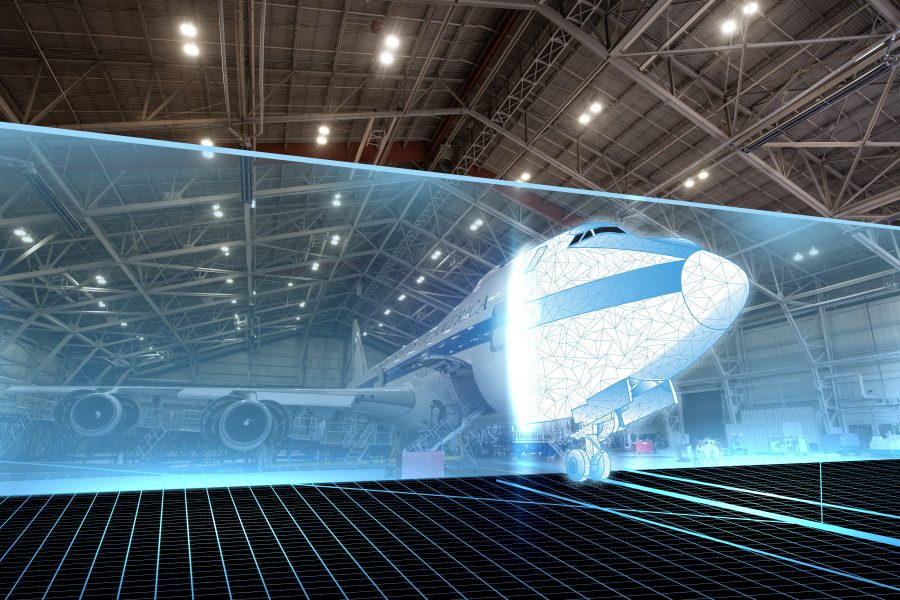The Air Force’s E-4B ‘Doomsday’ fleet—designed to give senior U.S. leaders a flying command post to control forces in the case of a national emergency or crisis—consists of just four aircraft, with one always on alert. That doesn’t leave a lot of time for maintainers and operators to train on the airframe.
To solve that issue, the 595th Command and Control Group is building out extensive virtual training software. That required a complete 3-D scan of the E-4B’s interior and exterior, along with a storyboard detailing user engagement in the VR environment, 55th Wing spokesperson Ryan Hansen told Air & Space Forces Magazine.
Seven VR modules of the aircraft are currently in production, with the first one set to be delivered in February. Additionally, the wing has secured funding to develop 14 other modules, specifically tailored to maintenance tasks for the E-4B. The development process for these modules will begin in March, Hansen said.
“The E-4B is a high demand, low supply asset that has a vast range of missions,” Scott Petty, 595th C2G Virtual Reality Training Laboratory manager said in a statement.
To ensure Airmen receive the necessary qualification and recurring training, the unit wants to embrace what it calls “extended reality,” or “XR,” including everything from virtual reality training on the new digital model to mixed or augmented reality training. The goal is to provide an efficient training regimen for essential personnel without having to depend on the actual aircraft, the spokesperson said.
The 595th C2G also received a prototype training device called the ‘Weapon System Maintenance Trainer,’ developed through an Air Force Global Strike Command WERX challenge. This emulator enables essential personnel to train, operate, and troubleshoot multiple E-4B mission systems without being on the aircraft. The WSMT responds just like the actual systems on the aircraft would, according to Hansen.
Since 2021, the VR training lab has commissioned four Doomsday training modules. Maintainers and operators are currently using these original VR modules to familiarize themselves with the aircraft, said Hansen.
“The Air Force recognized the need to leverage emerging technologies to provide the best training to the Airman,” said Petty, a former E-4B crew chief. “We have three virtual reality training systems with plans of expanding. The 595th C2G’s vision is to establish the premier virtual reality training program in Air Force Global Strike Command.”

The E-4B is the evolved version of the E-4A, which has been flying since the 1970s. By 1985, all aircraft were converted to the B models. The Air Force plans to replace the aging fleet, set to retire in the early 2030s, with the Survivable Airborne Operations Center (SAOC). They issued a request to the industry for the development of up to four potentially used, but similarly sized commercial-derivative airframes back in 2020.
In December, Boeing confirmed that it has been excluded from the competition to produce the SAOC, leaving Sierra Nevada Corp the sole company competing for the SAOC contract. The Nevada-based manufacturer produced the service’s light attack/armed reconnaissance aircraft, A-29 Super Tucano.
While the Air Force has yet to officially choose a manufacturer, the service has said it plans to invest $889 million for the development of the SAOC fleet in fiscal 2024, a significant increase from the $98 million allocated for the effort in 2023.
